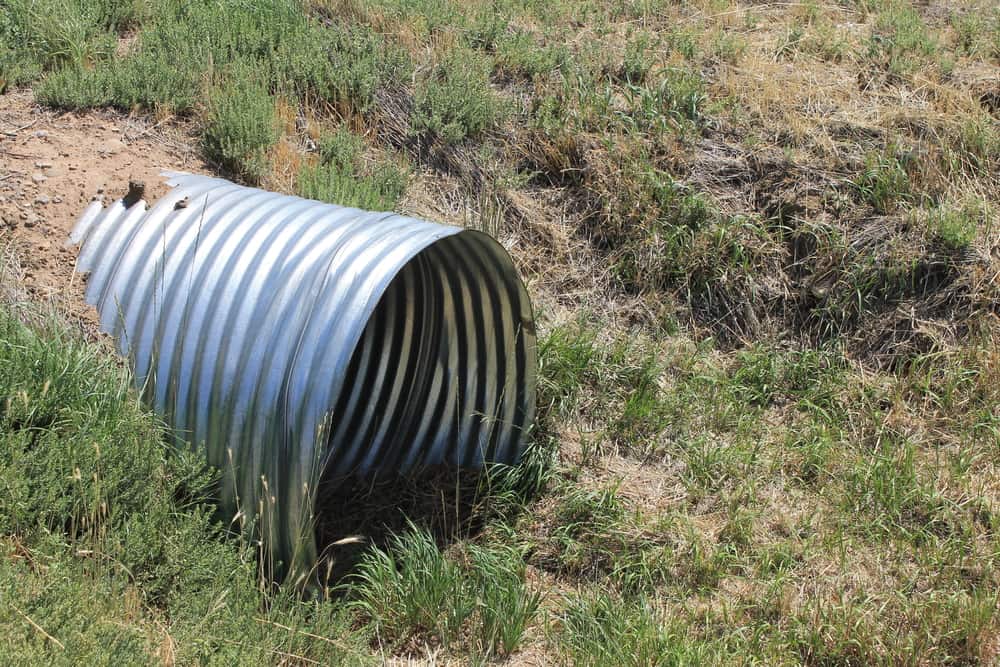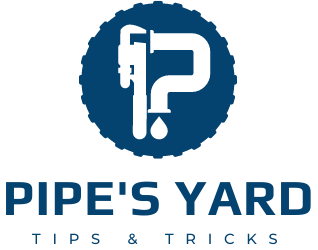The best way to clean out a culvert pipe is by using a combination of manual labor and equipment. First, clear any debris or vegetation away from the area surrounding the pipe. Then use shovels and brooms to manually remove sediment buildup inside the pipe.
For deeper sections, you can use specialized tools such as high-pressure water jetters or rotating cutters attached to long rods that are inserted into the pipe. If there is a significant amount of sludge accumulation in the pipe, it may need to be dug out with an excavator or similar machine. After all of this has been done, inspect the entire length of the culvert for any remaining obstructions before allowing water flow again through it.
Cleaning out a culvert pipe can seem like a daunting task, but it doesn’t have to be. One of the best ways to do this is by using an auger or drain snake. This tool will easily break through clogs and debris that may be blocking the passage of water in the pipe, allowing for efficient cleaning and improved flow.
Additionally, if there are roots present that need to be removed, then renting or buying a motorized cutter head attachment can help with this process as well.

Credit: www.pipsisland.com
How Do You Get Dirt Out of a Culvert Pipe?
Cleaning a culvert pipe of dirt and debris can be done in several ways. One method is to use high pressure water from either a garden hose or power washer to flush out the dirt and debris. If the blockage is severe, you may need to use specialized equipment such as a sewer jetter with rotating nozzles for optimal cleaning results.
You may also need to manually remove large rocks and other obstructions using shovels or rakes if they are too big for the water pressure alone. Additionally, depending on the size and length of your culvert pipe, you may even have to physically crawl inside it and hand-remove any remaining clogs or buildups that cannot be removed through other methods.
How Do You Keep a Culvert Pipe from Clogging?
The best way to keep a culvert pipe from clogging is by regularly inspecting and cleaning the pipe. It’s important to check for any debris or obstructions that could cause clogs, such as leaves, twigs, sand and silt. If you find any of these materials in the culvert pipe then it should be removed immediately.
Additionally, it’s recommended to install a filter at the entrance of the culvert pipe which can help prevent large objects from entering and causing blockages. Finally, regular maintenance on surrounding drains can also help reduce sediment buildup which may lead to clogging in your culvert pipes over time.
How Much Dirt Should Be Over a Culvert Pipe?
The amount of dirt over a culvert pipe needs to be enough to provide structural support and prevent erosion. Generally, it should be at least 2 feet above the top of the pipe. Additionally, soil should extend one foot past both ends of the pipe in order to ensure proper drainage away from the opening.
It’s also important that any backfill used is compacted in order to maintain its integrity and stability over time. Lastly, if there are any changes in elevation along the length of the culvert pipe, they need to be accounted for when determining how much dirt will cover it; generally speaking, each change requires an additional 6 inches or so of fill material.
How Do You Clean Drain Pipes under Driveway?
The best way to clean drain pipes under a driveway is by using a power washer. You should start by attaching the appropriate nozzle and setting the pressure level on your power washer to the lowest setting. This will help reduce damage while cleaning out any dirt, debris, or other build up that may have accumulated in the pipe over time.
Once you have sprayed down the area around and inside of each pipe, you can then use an auger or snake to physically remove any stubborn blockages within them. Finally, flush out all remaining residue with hot water and soap before allowing it to dry completely before reinstalling any covers or grates you might need for access points along your driveway drainage system.
How to clean out culvert easy
Culvert Cleaning Tool
Culvert cleaning is essential for maintaining an effective drainage system. To make this job easier, there are various tools on the market such as a culvert cleaning tool. This specialized tool features a long handle with a curved blade at one end that can be used to scrape away debris from inside the pipe and remove clogs quickly and efficiently.
It is designed to reach difficult-to-access areas of the culvert, making it ideal for both residential and commercial applications.
Culvert Cleaning Tool Rental
Culvert cleaning tool rental is a convenient and cost-effective way to keep your drainage system in top shape. Whether you need to clean out culverts or other areas of your drainage system, renting the right tools can make all the difference. With the right equipment, you can quickly and safely remove debris from clogged pipes and restore flow to your drainage system with minimal hassle.
How to Clean Out a Culvert With a Tire
Cleaning out a culvert with a tire is an easy, cost-effective way to keep your drainage system clear and running properly. To do this, you will need one or more large tires that can be filled with water and pushed along the culvert to dislodge debris such as leaves, dirt, rocks, and any other blockages. By pushing the tire through the entire length of the culvert while it is filled with water, you should be able to remove most of these blockages without having to use specialized equipment.
High Pressure Culvert Cleaning
High pressure culvert cleaning is a fast and efficient way to remove debris from pipes, drains, and other drainage systems. The process involves the use of powerful water jets that blast away dirt, mud, roots, rocks, and any other obstructions in the pipe or drain. This method of cleaning can save time and money since it is more effective than traditional methods like manual scrubbing or chemical treatments.
Additionally, high pressure culvert cleaning can reduce the risk of blockages occurring due to buildup over time as well as improving overall flow efficiency within the system.
Culvert Cleaning Auger
Culvert cleaning augers are specially designed to help clean out clogged culverts from the inside. These augers feature a rotating head with spiral blades that cut through debris, roots and sediment as it moves through the pipe. The auger is self-feeding, so no external force is needed to move it forward; instead, the pressure of the blockage pushes it along until the entire length of pipe has been cleared.
It’s an efficient way to keep drainage systems running smoothly without having to remove or replace sections of pipe.
Diy Culvert Cleaning Tool
DIY culvert cleaning tools are a great way to keep your culverts clean and free of debris. This type of tool is easy to use, cost-effective, and doesn’t require the use of dangerous chemicals or other hazardous materials. DIY culvert cleaning tools can help you remove leaves, sticks, rocks, silt build up and more from your culverts in just a few simple steps.
Culvert Cleaning Tool Home Depot
If you’re looking for a reliable and efficient tool to help with your culvert cleaning needs, Home Depot has you covered. Their online store offers a variety of different tools specifically designed to make clearing out culverts quick and easy. From hand-held augers to heavy-duty pumps that can reach deep into the pipes, Home Depot is sure to have something that will get the job done right.
With unbeatable prices and fast shipping options available, it’s never been easier or more affordable to keep your drainage system in top shape!
How to Dig Out a Culvert
Digging out a culvert can seem like an intimidating task, but with the right tools it’s fairly straightforward. Before you start digging, make sure to call your local utility provider and ask if there are any buried pipes or cables that may be in the way of where you plan to dig. Once you’ve got the all-clear, use a shovel or mini-excavator to remove dirt from around the culvert pipe until it is visible on both sides of your excavation site.
If possible, try to leave at least 6 inches between where you stop digging and the edge of your culvert so that when rain falls the water accumulates in this area instead of pooling up against your new structure.
Conclusion
In conclusion, cleaning out a culvert pipe can be an effective way to help prevent flooding and other water damage in your home or yard. With the right tools and techniques, you can easily keep your culvert pipes clean and clear of debris. Be sure to follow safety precautions when working with high pressure hoses or chemicals.
Using these tips will ensure that your culvert pipes remain clean and free-flowing for years to come.

